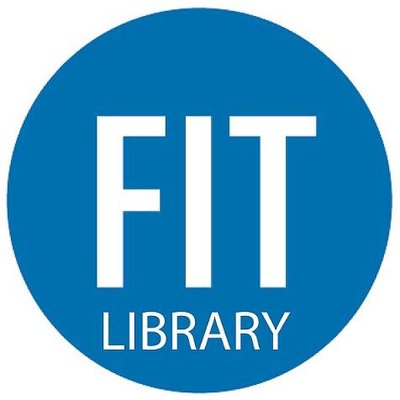Transformations in News Reporting Practices: An In-Depth Qualitative Study of Social Media Usage among Malaysian Newspaper Journalists
DOI:
https://doi.org/10.61841/j6q4qz40Keywords:
Journalism, Social media, news credibility, news innovation, Malaysian newspapersAbstract
Technology continues to change ways journalists gather and deliver news. This qualitative study examines the role and influence of social media in changing the ways Malaysian journalists gather and deliver news. In-depth interviews were conducted among print media journalists in Klang Valley to determine the use and influence of social media in their work. The Diffusion of Innovation theory was used as a foundation to explore how journalists adopted social media in news gathering and reporting. The study found that social media was advantageous and indispensable in news gathering and reporting as it is resourceful and convenient. It also found that social media dictates news in print media and has induced an urgency to be first with information. Concerns were raised that inaccurate or false information could be released and that the use of social media has burdened journalists with additional roles.
Downloads
References
1. McKewon, E. 2018. Public Trust in Journalism: An Annotated Bibliography. University of Sydney
Publications.
2. Malaysian Communication and Multimedia Commission. (2017). Internet Users Survey
1. Available at : https://www.mcmc.gov.my/skmmgovmy/media/General/pdf/MCMC-Internet
2. Users-Survey-2017.pdf (accessed 11 April 2018)
3. Talbot, M. (2007). Media Discourse: Representation and Interaction. Edinburgh: Edinburgh University Press.
4. Bordieu, P. (2015). The Social Structures of the Economy. Cambridge . Polity
5. Yang, L.F & Sidin, A (2013). Framing interethnic conflict in Malaysia: A comparative analysis of newspapers
coverage on the keris polemics. International Journal of Communication 6:166–189
6. Swift, A. (2016), September 14. Americans' trust in mass media sinks to new low. Available at
http://www.gallup.com/: http://www.gallup.com/poll/195542/americans-trust-mass-mediasinksnew- low.aspx
(accessed 16 August 2018)
7. Greer, C. F. & Ferguson, D. A. (2011). Using Twitter For Promotion And Branding: A Content Analysis Of Local Television Twitter Sites. Journal of Broadcasting & ElectronicMedia, 55(2): 198–214.
8. Usher, N. (2015). Newsroom moves and the newspaper crisis evaluated: space, place, and cultural meaning. Media, Culture & Society, 37(7) :959-971
9. Tamam, E. & Abdullah, A. N. (2015). Malaysian journalists’ perceptions of the role of the media. The Social Science Journal, 52: 46–53
10. Jalarajan Raj, S. & Sreekumar, R. (2012). Covenant cog or functional fourth estate. A Survey of Malaysian Journalists’ attitudes towards their profession. Romanian Journal of Journalism & Communication/Revista
Romana de Jurnalismsi Comunicare, VII(1): 16–32
11. Kaplan, A. M. & Haenlein, M. (2010). Users of the World, Unite! The Challenges and Opportunities of Social Media. Business Horizons, 53(1), 59-68
12. Kim K, Sin S and Yoo-Lee (2014) Undergraduates’ use of social media as information sources. College & Research Libraries 75(4): 442-457.
13. Boyd DM and Ellison NB (2007) Social Network Sites: Definition, History, and Scholarship. Available at: http://jcmc.indiana.edu/vol13/issue1/boyd.ellison.html (accessed May 27, 2017).
14. Lasorsa, D. Lewis, S. Holton, A. (2012). Normalizing Twitter: Journalism Practice in an Emerging Communication Space, Journalism Studies 13(1):19-36
15. Harrison, T. & Barthel, B. (2009). Wielding New Media In Web 2.0: Exploring The History Of Engagement With The Collaborative Construction Of Media Products. New Media and Society, 11(1).
16. Chen, G. M. (2011). Tweet this: A uses and gratifications perspective on how active Twitter use gratifies a
need to connect with others. Computers in Human Behavior. 27(1): 755–762.
17. Ausserhofer, A. & Maireder, A. (2012) National Politics On Twitter: Structures And Topics Of A Networked
Public Sphere. Information. Communication & Society, 16(3), 291-314
18. Schmierbach, A. & Oldorf, H. (2012). A Little Bird Told Me, So I Didn't Believe It: Twitter, Credibility, and
Issue Perceptions. Communication Quarterly, 60(3).
19. Rozanna, S. (2017). Facebook Is Most Used Social Media Platform By M'sian Students: Survey. Available at
https://www.nst.com.my/education/2017/06/246209/facebook-most-used social-media-platform-msianstudents-survey (accessed 10 May 2018)
20. Steensen, S. (2011). Online Journalism And The Promises Of New Technology A Critical Review And Look
Ahead. Journalism Studies, 12(3). 311-327
21. Garrison, B. (2001a). Computer-assisted reporting nears complete adoption. NewspaperResearch Journal,
22(1), 65.
22. Dibean, W., & Garrison, B. (2001). How six online newspapers use web technologies. Newspaper Research
Journal, 22(2), 79
23. Jordaan, M. (2013). Poke Me, I'm A Journalist: The Impact Of Facebook And Twitter OnNewsroom Routines
And Cultures at Two South African Weeklies. Ecquid Novi: African Journalism Studies, 34:1, 21-35
24. Farhi, P. (2009). The Twitter explosion. American Journalism Review. 31(1). 26-31.
25. Tandoc Jr, E. C., & Vos, T. P. (2016). The journalist is marketing the news: Social media inthe gatekeeping
process. Journalism Practice, 10(8), 950-966
26. Tashakkori, A. & Teddlie, C. 2003. Handbook of Mixed Methods in Social and Behavioral Research. Thousand
Oaks: Sage
27. Gardner, D.C., Vogt, P.W., & Haefelle, L.M. (2012). When to Use What Research Design? New York:
Routledge
28. Patton, M.Q. (2002) Qualitative research and evaluation methods. Thousand Oaks . Sage Publications.
29. Sharafa, D. & Norma, N. (2018). Framing the Sustainable Development Goals in Malaysian Online News. SEARCH Journal of Media and Communication Research, 10(1) 1-24
30. Gunther, R., & Mughan, A. (Eds.). 2000. Democracy and the media. A comparative perspective. Cambridge: Cambridge University Press.
31. Freelon, D., Lopez, L., Clark, M., Jackson, S. (2018). How Black Twitter and other social media communities interact with mainstream news. Knight Foundation Research Report Available at: https://knightfoundation.org/features/twitter media (accessed on 17 May 2018)
Downloads
Published
Issue
Section
License
Copyright (c) 2020 AUTHOR

This work is licensed under a Creative Commons Attribution 4.0 International License.
You are free to:
- Share — copy and redistribute the material in any medium or format for any purpose, even commercially.
- Adapt — remix, transform, and build upon the material for any purpose, even commercially.
- The licensor cannot revoke these freedoms as long as you follow the license terms.
Under the following terms:
- Attribution — You must give appropriate credit , provide a link to the license, and indicate if changes were made . You may do so in any reasonable manner, but not in any way that suggests the licensor endorses you or your use.
- No additional restrictions — You may not apply legal terms or technological measures that legally restrict others from doing anything the license permits.
Notices:
You do not have to comply with the license for elements of the material in the public domain or where your use is permitted by an applicable exception or limitation .
No warranties are given. The license may not give you all of the permissions necessary for your intended use. For example, other rights such as publicity, privacy, or moral rights may limit how you use the material.
















